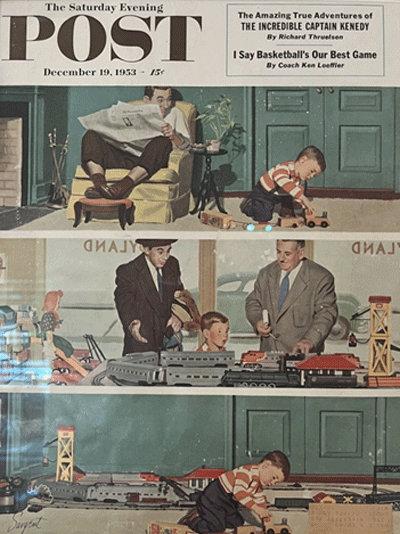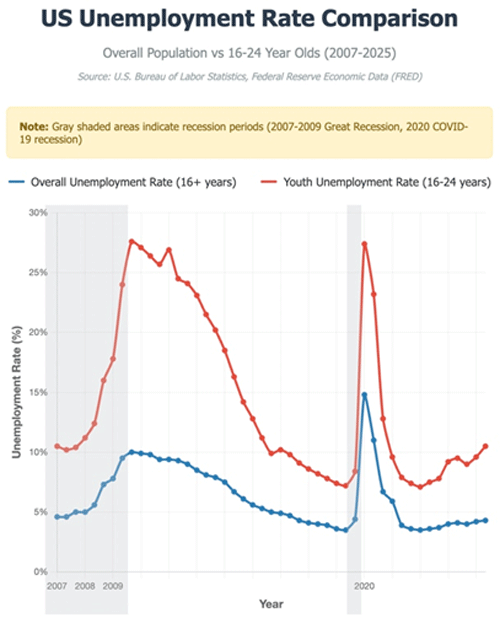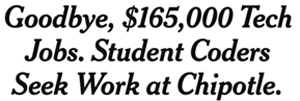America’s Great Unraveling
-
 Ed D'Agostino
Ed D'Agostino
- |
- September 12, 2025
- |
- Comments
"The greatest innovation in history is not the iPhone or the semiconductor; it's the American middle class." –Scott Galloway
The American middle class is a historical anomaly. For most of modern history, people were either rich or poor, with a sprinkling of guild merchants, professionals, and yeoman farmers making up a small middle class.
One of the great successes of the American experiment was producing a large and prosperous middle class, which reached its zenith in the post-WWII era. It wasn’t a perfect time, but life, for more people than ever before, had the potential to look something like this:

Source: Private Archives
Unfortunately, today's middle class is shrinking, and a few important developments indicate this could continue.
Some will note that we have more wealthy households than ever, and that is true. UBS estimates that the number of millionaire American households increased 1.5% last year. For some, the American dream is alive and well. We are all capitalists here, and I rejoice in their success.
Still, the American middle class shrank from 61% of the population in 1971 to 51% in 2023. Those who fell out of this cohort did not fall up.
|
The Kids Are Not Alright
Today’s youth, many of them saddled with student debt, are hitting a job market vastly different than you and I experienced in our twenties. A college degree is still required for many jobs, but it guarantees nothing.
The unemployment rate for today’s 16- to 24-year-olds is 10.5%, while the overall unemployment rate is 4.3%. This discrepancy is fairly typical, as you’ll see in the chart below. But the trend is concerning.

If you disregard the Covid-period, which was an anomaly, you mostly see a steady decline in unemployment since our last financial crisis. But notice youth unemployment’s steep climb since 2021—far steeper than the overall unemployment rate.
Is this an early sign of AI’s impact on entry level jobs?
The evidence suggests yes. Goldman Sachs research found that unemployment among 20- to 30-year-olds in tech-exposed occupations has risen by almost three percentage points since the start of 2025. This is notably higher than it has risen for their same-aged counterparts in other sectors, and for overall tech workers as well.
This corroborates anecdotal reports that generative AI is contributing to hiring headwinds facing recent college graduates in technology.

Source: The New York Times
The Goldman report warns that AI advances could expose the equivalent of 300 million full-time jobs to automation. They estimate this poses a risk to just 2.5% of US employment, but AI is impacting entry-level positions first and fastest.
I’m confident most unemployed computer science grads will eventually adapt and find new opportunities. Though some struggling to find work are surely first-gen graduates who were banking on a STEM degree bumping them into the middle class.
A Further Hollowing Out?
The total share of US household income held by the middle class fell from 62% in 1970 to just 43% in 2022. Meanwhile, the share held by upper-income households increased from 29% in 1970 to 48% in 2022.
This increased economic polarization mirrors (and is likely exacerbating) our ever-increasing political polarization, which is growing increasingly violent. The assassination of conservative activist Charlie Kirk on a Utah college campus this week certainly appears politically driven.
Faith in our country, our political system, and trust that our economy would propel all of us forward, is a large part of what holds us together as a nation. That faith is fraying, particularly among our youth.
John Mauldin coined the term "the great reset" to describe a global debt crisis. Many focus on the economic aspect. But "How do I stay rich?" might not be the most important question to ask.
The more pressing question, particularly for all of us concerned with the long-term wellbeing of our children and grandchildren might be, "How do we hold the country together?" Otherwise, the great reset could turn into the great unraveling.
What does this all have to do with our shrinking middle class?
The American dream, where hard work guarantees you can earn a living, have a home, get ahead, and know your children will have it better than you, is no longer a reality for many. Young people, particularly young men who don’t have any real skin in America’s economic game—who can’t access a clear path up the economic ladder—can pose a real threat. We all benefit when they’re employed and confident in their prospects.
That brings us to my recent conversation with Barry Habib about one of America’s crucial wealth-building engines: homeownership. Barry is a longtime favorite at the SIC and the foremost expert on the US mortgage market. He was kind enough to make a return appearance on my Global Macro Update interview series.

Watch Ed’s interview with Barry Habib by clicking the image above.
You can also read a transcript of our interview here.
|
Until next time, thank you for reading.

Ed D’Agostino
Publisher & COO
This edition of GMU is dedicated to Cesar Augusto Murillo, who perished in the World Trade Center. May his memory live forever.
If you prefer to listen to Global Macro Update, you can do so here:

 Ed D'Agostino
Ed D'Agostino


